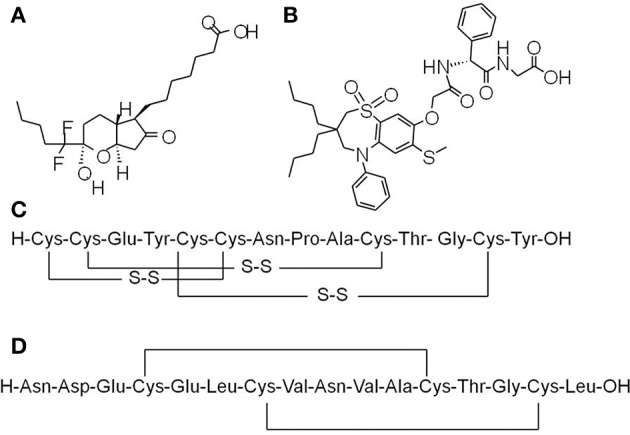Figure 1.

Chemical structures of prosecretory agents. (A) Lubiprostone (Amitiza), a bicyclic fatty acid derived from prostaglandin E1 (PGE1), is the first chloride channel-targeted drug that was approved by the US FDA for treatment of constipation. (B) Elobixibat, a first-in-class ileal bile acid transporter (IBAT) inhibitor, accelerates colonic transit through enhancing delivery of bile acids to the colon, and thus increasing stool frequency as well as decreasing constipation-related symptoms in chronic idiopathic constipation (CIC) patients. (C) Linaclotide, a 14-amino acids peptide homologous to bacterial heat-stable enterotoxins, is a first-in-class anti-constipation drug targeting guanylyl cyclase C (GC-C) receptor on the luminal surface of GI enterocytes. Activation of GC-C receptor increases both intracellular and extracellular levels of cyclic guanosine monophosphate (cGMP). The increase in intracellular cGMP level triggers the activation of cystic fibrosis transmembrane conductance regulator (CFTR) chloride channel activity and thereby results in salt and water secretion into the lumen of intestine. (D) Plecanatide, a 16 amino acid GC-C activator, is another synthetic GC-C agonist that activates GC-C receptors located on the luminal surface of intestinal enterocytes, leading to the elevation of intracellular cGMP and subsequent activation of CFTR chloride channel.
